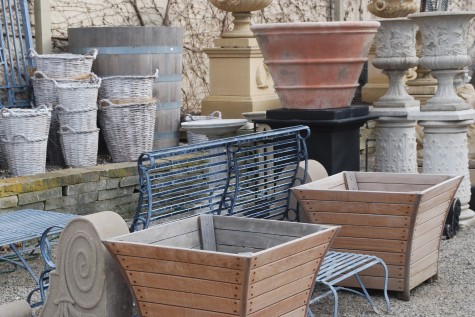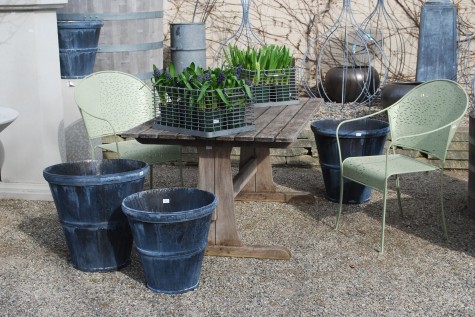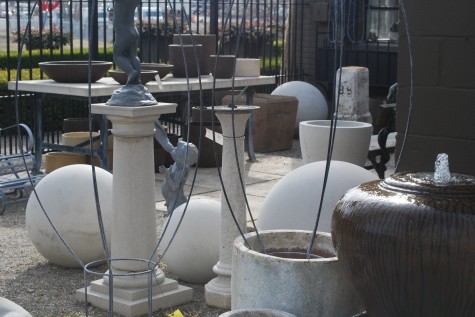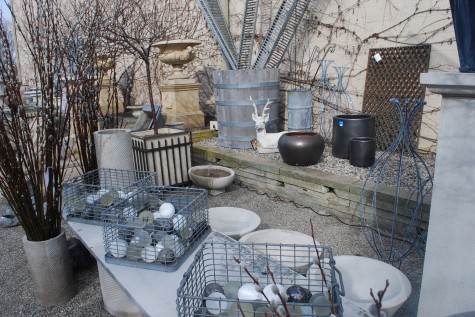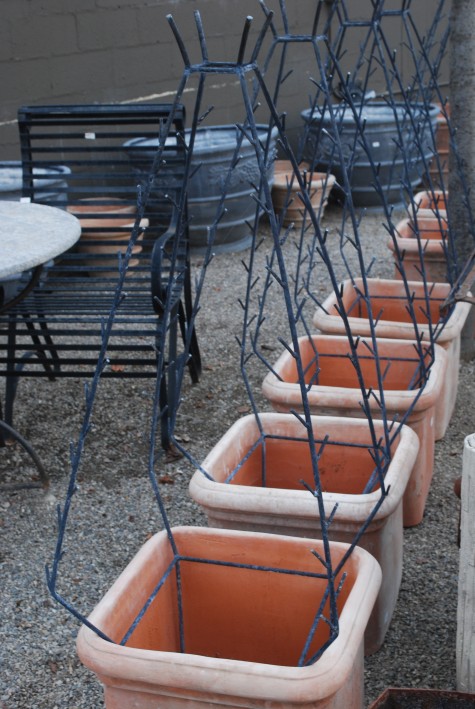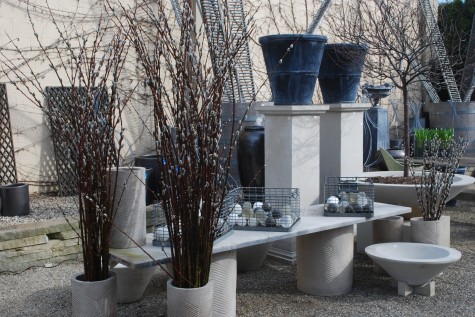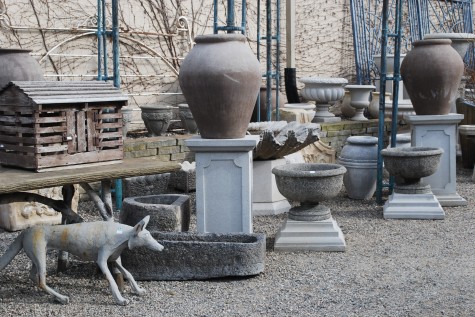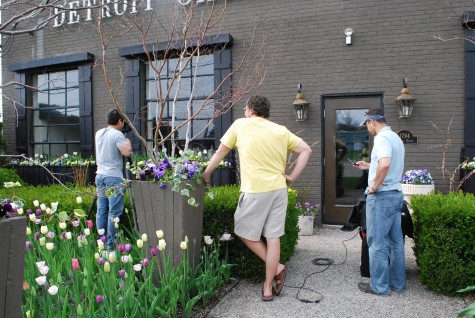 Six weeks ago, a garden editor from Better Homes and Gardens rang up-could she send a crew out to photograph my spring pots? I grew up with this publication at home, as my Mom subscribed for many years. She was not so interested in the home decor, cooking, or entertaining part, but she avidly followed their articles about gardening and crafts. I was delighted that they wanted to come. James Meredith, the US Secretary of Agriculture under Woodrow Wilson, founded Meredith Publishing, and Better Homes and Gardens in 1922-this information is courtesy of Wikipedia. I had 6 weeks to get ready. I planted 12 containers ornamented with with twigs, and planted with spring flowering bulbs, herbs, spring vegetables and cold tolerant annual and perennial plants. The containers were chosen by Scott Johnson, an art director with Meredith. I was surprised that he chose fairly contemporary containers-but today’s Better Homes is a publication with plenty of surprises.
Six weeks ago, a garden editor from Better Homes and Gardens rang up-could she send a crew out to photograph my spring pots? I grew up with this publication at home, as my Mom subscribed for many years. She was not so interested in the home decor, cooking, or entertaining part, but she avidly followed their articles about gardening and crafts. I was delighted that they wanted to come. James Meredith, the US Secretary of Agriculture under Woodrow Wilson, founded Meredith Publishing, and Better Homes and Gardens in 1922-this information is courtesy of Wikipedia. I had 6 weeks to get ready. I planted 12 containers ornamented with with twigs, and planted with spring flowering bulbs, herbs, spring vegetables and cold tolerant annual and perennial plants. The containers were chosen by Scott Johnson, an art director with Meredith. I was surprised that he chose fairly contemporary containers-but today’s Better Homes is a publication with plenty of surprises.
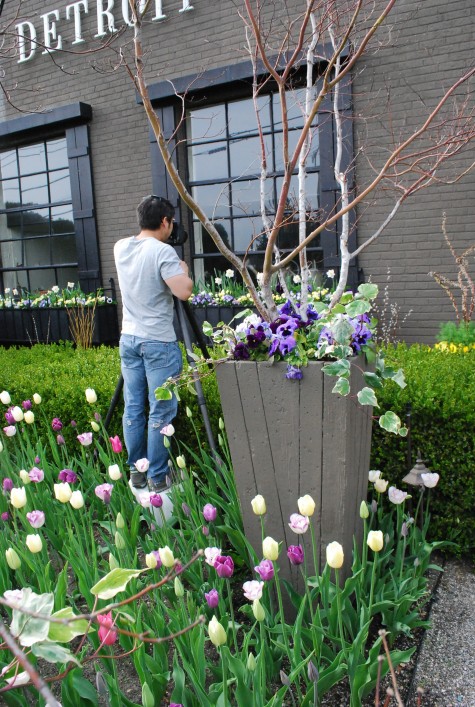 The six weeks prior to the shoot were cold and rainy. At one point I had all of the containers inside our greenhouse space where it was warm. But once the plants started to stretch, I had to move them outside. I placed them just outside my office door, and hoped for the best. It is a southern and very protected location. 2 days of very hot weather just before they arrived helped to move my pots along. And the tulips obliged by throwing their first few blooms. By far and away the best part of the visit was the opportunity to watch how these 3 people put a composition together for a photograph. Scott would choose a container, and place it. Kitsada would take a series of photographs, the results of which could instantly be seen on a computer and screen which was wired into his digital camera.
The six weeks prior to the shoot were cold and rainy. At one point I had all of the containers inside our greenhouse space where it was warm. But once the plants started to stretch, I had to move them outside. I placed them just outside my office door, and hoped for the best. It is a southern and very protected location. 2 days of very hot weather just before they arrived helped to move my pots along. And the tulips obliged by throwing their first few blooms. By far and away the best part of the visit was the opportunity to watch how these 3 people put a composition together for a photograph. Scott would choose a container, and place it. Kitsada would take a series of photographs, the results of which could instantly be seen on a computer and screen which was wired into his digital camera.
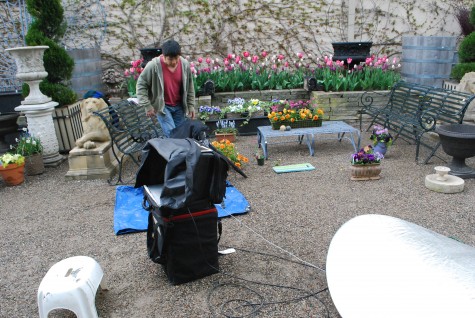 Don’t quote me on any of the technical issues-I was just an interested observer. The container would be placed on a surface. Other companionable elements would be added and subtracted They were incredibly focused and persistent about an arrangement that would suit them. They knew instantly what was not working, and were confident about what was. We put anything and everything in the shop at their disposal. One photograph took almost 2 hours to arrange, and shoot.
Don’t quote me on any of the technical issues-I was just an interested observer. The container would be placed on a surface. Other companionable elements would be added and subtracted They were incredibly focused and persistent about an arrangement that would suit them. They knew instantly what was not working, and were confident about what was. We put anything and everything in the shop at their disposal. One photograph took almost 2 hours to arrange, and shoot.
 A photograph is an image with 4 edges. I was very interested to see how and where they placed objects in the physical space, given what they wanted to see in the visual space. The pot of grape hyacinths pictured above-only 3 stems appeared in the foreground space of the photograph.
A photograph is an image with 4 edges. I was very interested to see how and where they placed objects in the physical space, given what they wanted to see in the visual space. The pot of grape hyacinths pictured above-only 3 stems appeared in the foreground space of the photograph.
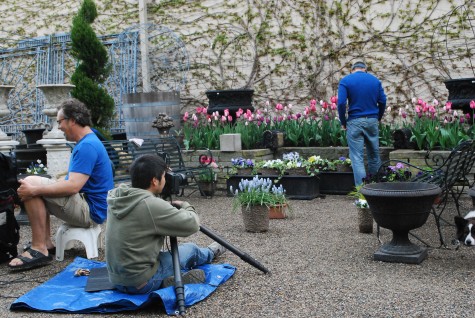 I believe Kitsada spent more time on the ground than he did standing up. It only makes sense. He wanted his eye at the same level as the object of his attention. This is the same idea as placing small containers on tables in the garden, and very large containers on the ground. This makes for a stronger view.
I believe Kitsada spent more time on the ground than he did standing up. It only makes sense. He wanted his eye at the same level as the object of his attention. This is the same idea as placing small containers on tables in the garden, and very large containers on the ground. This makes for a stronger view.
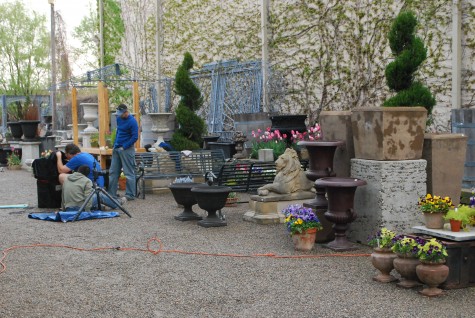 It took quite some time to compose each photograph. Good composition does take a long time; a landscape takes years. A photograph records a moment which will never to be again. A landscape is always in motion-growing over the edges of your composition just as yuo get them set.
It took quite some time to compose each photograph. Good composition does take a long time; a landscape takes years. A photograph records a moment which will never to be again. A landscape is always in motion-growing over the edges of your composition just as yuo get them set.
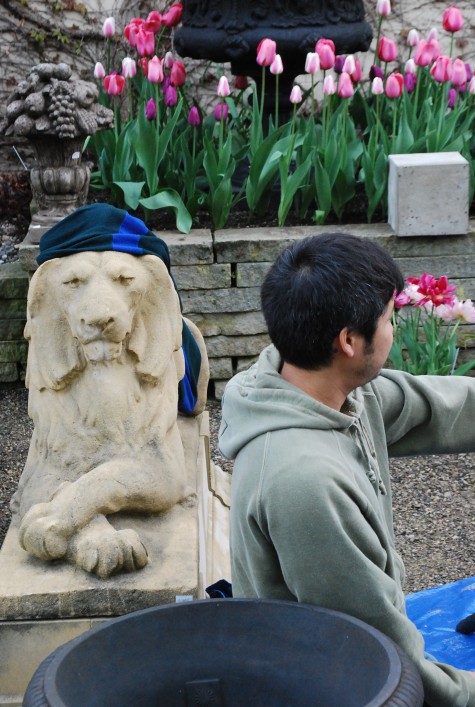 They were a great group-I could hardly keep up with them. They shot the first night until 8 pm, and were on the job the next morning at 5:30.
They were a great group-I could hardly keep up with them. They shot the first night until 8 pm, and were on the job the next morning at 5:30.
Next February or March-we’ll see what came of their visit. Scot brought me an advance issue of their June magazine. There is a great article about a gardener who makes sense of a piece of land 50 feet wide, and 260 feet long. Her garden is beautiful; don’t miss it.



